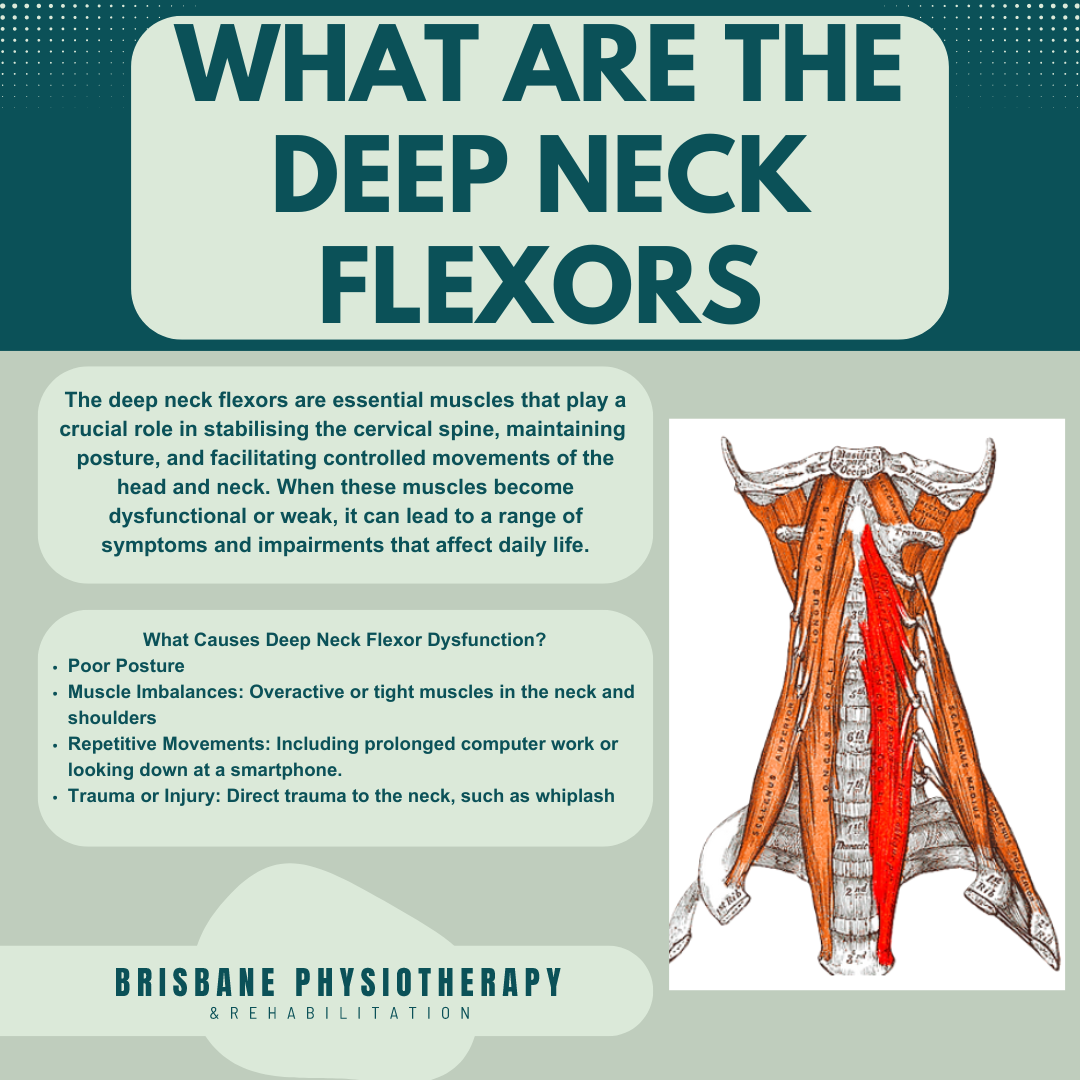What are the Deep Neck Flexors?
Introduction:
The deep neck flexors are essential muscles that play a crucial role in stabilising the cervical spine, maintaining proper posture, and facilitating controlled movements of the head and neck. When these muscles become dysfunctional or weak, it can lead to a range of symptoms and impairments that affect daily life.
What Causes Deep Neck Flexor Dysfunction?
Poor Posture: Prolonged periods of sitting with the head forward or rounded shoulders can weaken the deep neck flexors and contribute to dysfunction.
Muscle Imbalances: Overactive or tight muscles in the neck and shoulders, combined with weak deep neck flexors, can disrupt the natural balance and coordination of neck muscles.
Repetitive Movements: Engaging in activities that involve repetitive or sustained neck positions, such as prolonged computer work or looking down at a smartphone, can strain the deep neck flexors over time.
Trauma or Injury: Direct trauma to the neck, such as whiplash injuries from motor vehicle accidents or sports-related impacts, can damage the deep neck flexors and lead to dysfunction.
Symptoms of Deep Neck Flexor Dysfunction:
Neck Pain: Dull or achy pain in the neck, often exacerbated by certain movements or sustained postures.
Headaches: Tension headaches or cervicogenic headaches that originate from the neck and radiate to the head or behind the eyes.
Limited Range of Motion: Difficulty with neck mobility, including reduced ability to flex, extend, rotate, or tilt the head.
Muscle Weakness: Weakness or fatigue in the neck muscles, especially during activities that require neck stabilisation or prolonged holding of positions.
Postural Changes: Forward head posture, rounded shoulders, or a "chin poking" position due to imbalances in neck muscle strength and coordination.
Management Strategies for Deep Neck Flexor Dysfunction:
Physiotherapy: Working with a physiotherapist to develop a tailored rehabilitation program focused on strengthening the deep neck flexors, improving posture, and addressing muscle imbalances.
Deep Neck Flexor Exercises: Incorporating specific exercises to target the deep neck flexors, such as chin tucks, head nods, and cervical isometric holds, to improve strength, endurance, and coordination.
Postural Correction: Practising good posture habits, including ergonomic adjustments at workstations, regular breaks from prolonged sitting, and exercises to strengthen the upper back muscles.
Manual Therapy: Receiving hands-on treatments such as massage, myofascial release, or joint mobilisation from a qualified therapist to reduce muscle tension, improve tissue mobility, and alleviate pain.
Stretching: Performing gentle stretching exercises for the neck and shoulder muscles to alleviate tightness and improve flexibility, promoting better alignment and movement patterns.
Mindful Movement Practices: Incorporating activities like yoga, Pilates, or tai chi to enhance body awareness, promote relaxation, and improve overall neck and spine health.
Conclusion:
Deep neck flexor dysfunction can significantly impact your comfort, mobility, and quality of life, but with proactive management and targeted interventions, improvement is possible. By understanding the causes, symptoms, and management strategies outlined in this blog post, you can take positive steps towards addressing deep neck flexor dysfunction and reclaiming a pain-free, functional neck. Remember to consult with a healthcare professional for personalised guidance and support on your journey to optimal neck health and well-being.
